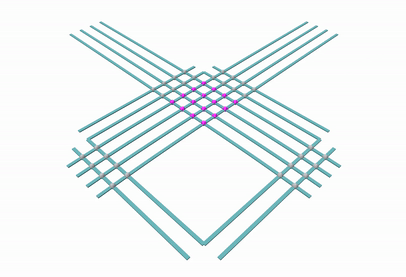DuneDisplay
 Simulation of the reconfigureable surface display executed by collaborator, Sofia Wyetzner
Simulation of the reconfigureable surface display executed by collaborator, Sofia Wyetzner
Summary
DuneDisplay is a robotic system that displays continuous surface approximations using a grid of flexible, elastic racks and an array of actuators. While continuous surfaces are often seen in design, they are difficult to dynamically display in the physical world. By imposing kinematic constraints and actuation via many independently functional modules, we can control the output geometry of the flexible rack grid. The goal is to go from a target surface to a simulated stable state, then to a physical approximation on the DuneDisplay.
The display is currently in the process of being designed and constructed.